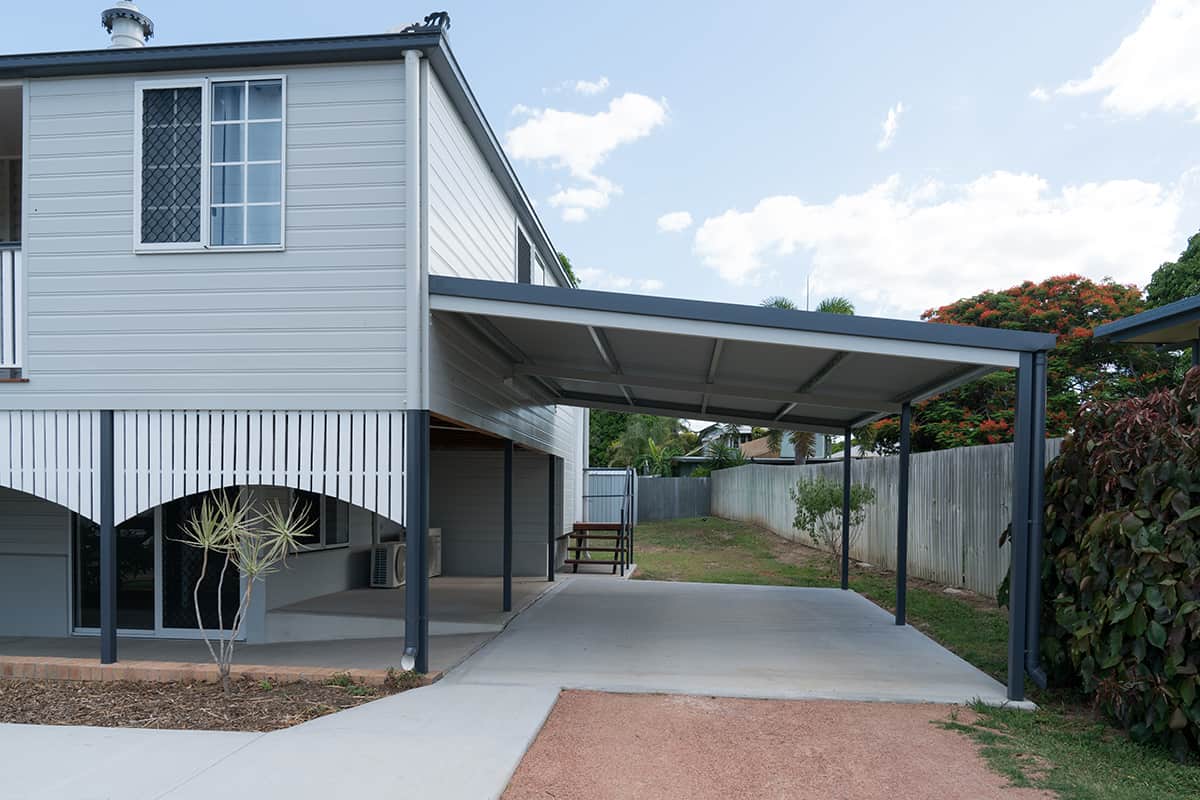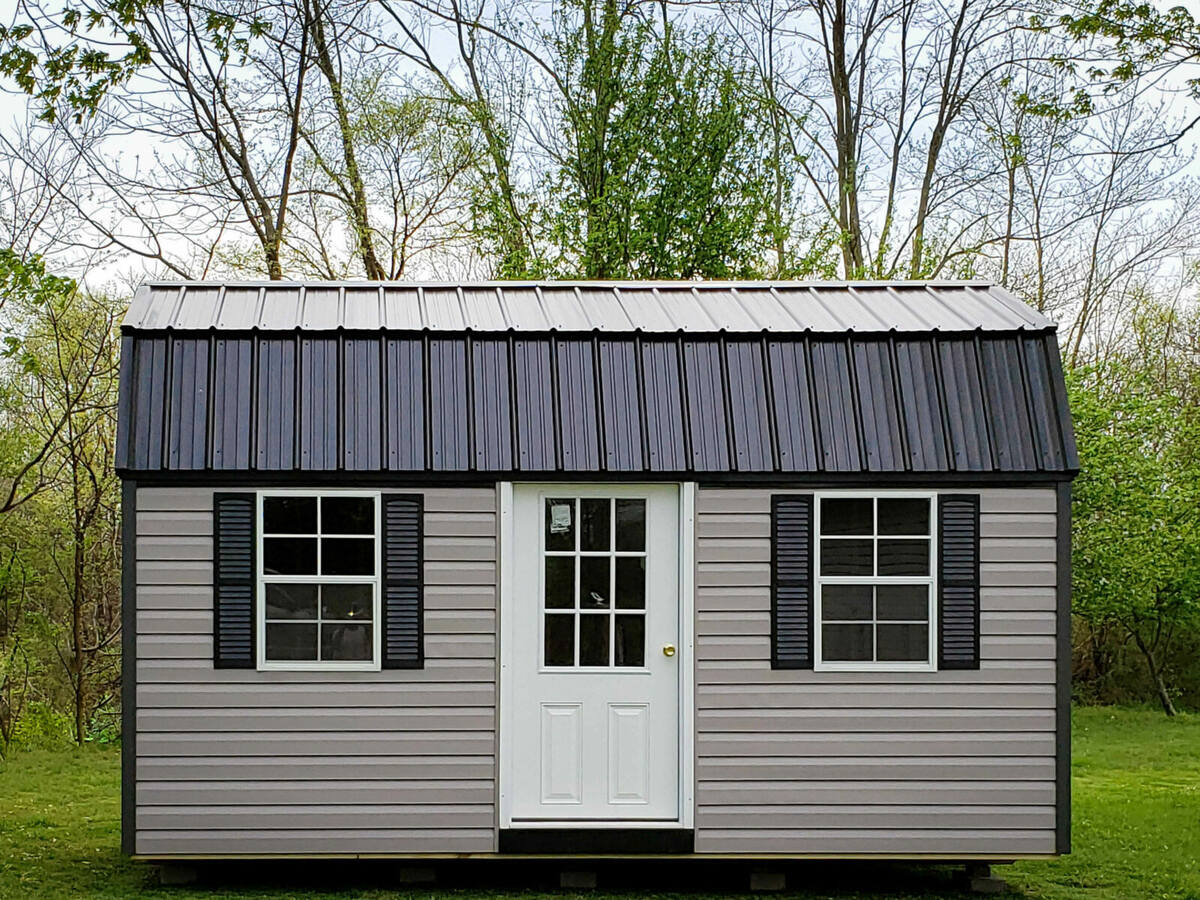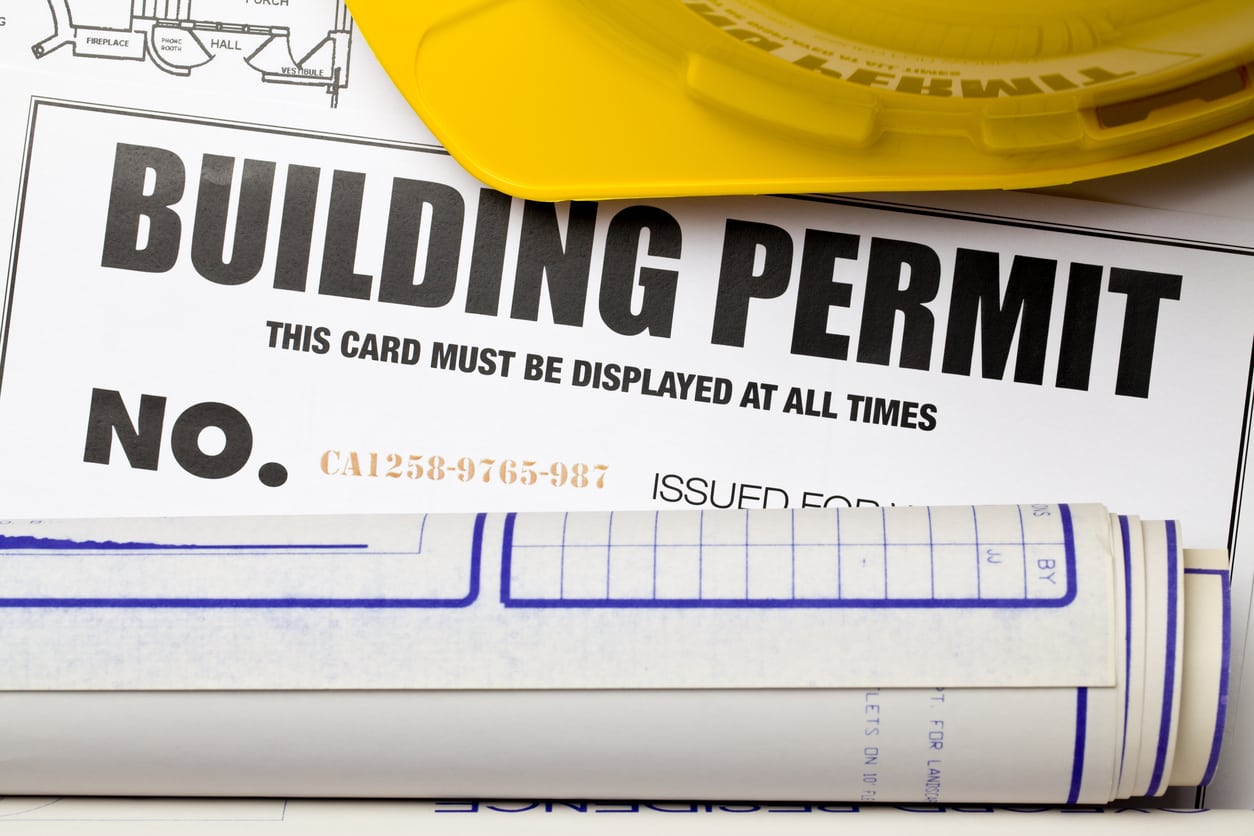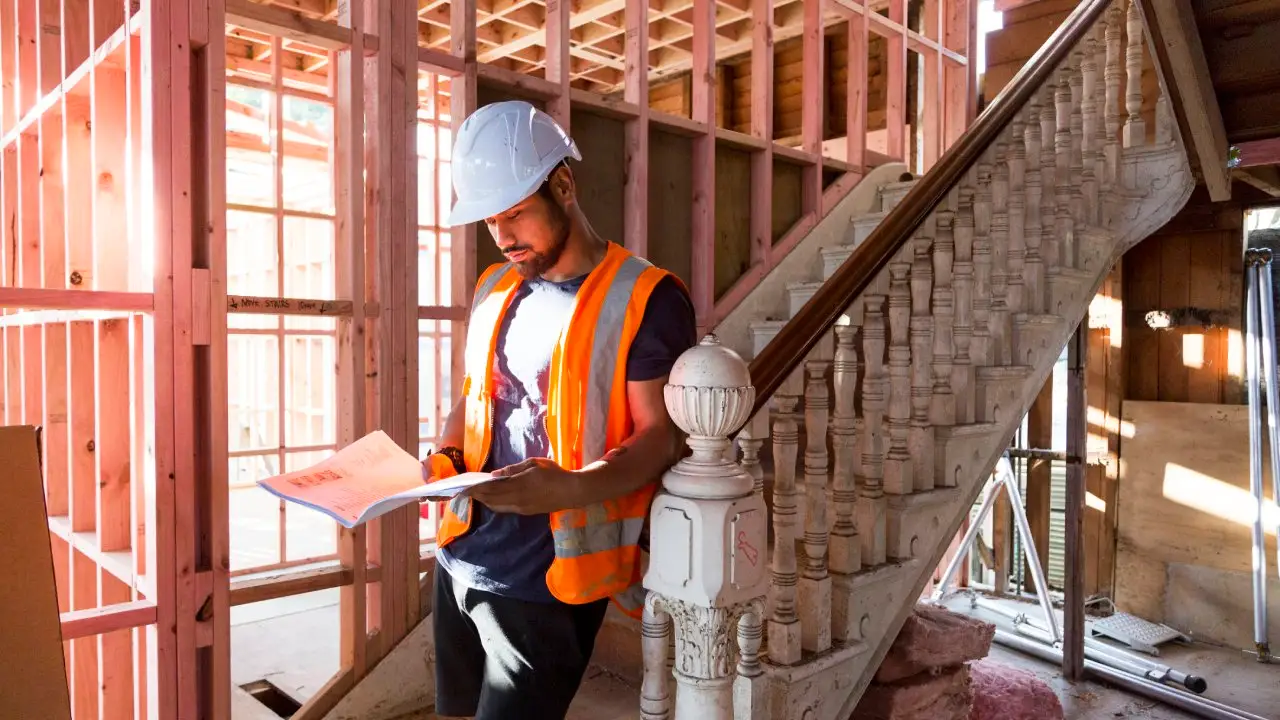Home>Furniture>Outdoor Furniture>What Happens If I Build A Patio Without A Permit


Outdoor Furniture
What Happens If I Build A Patio Without A Permit
Modified: March 7, 2024
Discover the consequences of building a patio without a permit. Ensure compliance and avoid legal issues when incorporating outdoor furniture into your outdoor space.
(Many of the links in this article redirect to a specific reviewed product. Your purchase of these products through affiliate links helps to generate commission for Storables.com, at no extra cost. Learn more)
Introduction
Building a patio is a fantastic way to expand your outdoor living space and create a relaxing oasis right in your backyard. Whether you envision a cozy gathering area or an elegant dining spot, a patio can add value and charm to any home.
However, before embarking on this project, it’s essential to understand the importance of obtaining the necessary permits. Many homeowners may be tempted to skip the permit process, assuming it’s just red tape and unnecessary bureaucracy. But building a patio without a permit can have serious consequences.
In this article, we will explore the potential risks and ramifications of constructing a patio without the appropriate permits. From legal issues to safety concerns and financial implications, understanding the importance of permits will ensure a smooth and successful patio-building experience.
Key Takeaways:
- Building a patio without a permit can lead to fines, stop-work orders, legal troubles, and insurance issues. It’s crucial to follow the permitting process to avoid financial and legal consequences.
- Obtaining permits for your patio ensures safety, legal compliance, and protection from financial burdens. Research local requirements, create a detailed plan, and schedule inspections to safeguard your investment.
Overview of Permits
Before diving into the details, let’s first understand what permits are and why they are required. Permits are legal authorizations issued by local government authorities that grant homeowners permission to undertake certain construction projects, such as building a patio.
When it comes to outdoor construction projects, permits are typically necessary to ensure that the project complies with local building codes and regulations. These codes are in place to protect the safety and well-being of both the homeowner and the surrounding community.
Permits for patios often cover aspects such as the size and design of the patio, the materials used, the proximity to property lines, and drainage requirements. The specific permit requirements can vary depending on your location, so it’s crucial to consult your local building department or zoning office to determine the exact permits needed for your patio project.
Obtaining a permit involves submitting detailed plans and project specifications to the building department for review. Once approved, you will receive a permit that authorizes you to begin construction. It’s important to note that the permit process may include associated fees, which can vary depending on the scope of your project and the regulations in your area.
While the permitting process may seem like an additional hurdle, it serves a crucial purpose. Permits ensure that your patio is constructed safely, following established guidelines and regulations. By obtaining the appropriate permits, you demonstrate your commitment to upholding safety standards and responsible construction practices.
Consequences of Building without a Permit
Building a patio without obtaining the necessary permits may seem like a tempting shortcut, but it can lead to a range of consequences that can cause significant headaches down the line. Let’s explore some of the potential ramifications of constructing a patio without the proper permits:
- Fines and Penalties: Building without a permit is a violation of local building codes and regulations. If caught, you could face substantial fines and penalties imposed by your local government. These fines can vary depending on the severity of the violation and the regulations in your area.
- Stop-Work Orders: If a building inspector discovers that you are constructing a patio without a permit, they have the authority to issue a stop-work order, halting construction until the proper permits are obtained. This can result in delays and additional costs as you navigate the permitting process.
- Repercussions During Home Sales: Unpermitted patios can cause complications when selling your home. Potential buyers may request proof of permits, and if you cannot provide them, it may lead to negotiations or even a loss in the value of your property.
- Legal Troubles: Building without permits may expose you to legal risks. If your unpermitted patio violates building codes and causes damage or harm to others, you may be held liable for any resulting injuries or property damage.
- Insurance Issues: Homeowner’s insurance policies may not cover damages related to unpermitted constructions. In the event of accidents, injuries, or property damage, your insurance provider may deny coverage, leaving you to bear the financial burden on your own.
- Complications with Homeowners Association (HOA): If you live in a community governed by a homeowners association, building without permits can lead to conflicts and potential fines imposed by the HOA. It’s essential to review your community’s rules and regulations before proceeding with any construction.
It’s clear that the consequences of building without a permit can be significant. The potential financial, legal, and logistical challenges outweigh any perceived benefits of skipping the permit process. Protect yourself and your investment by ensuring that your patio project is in compliance with local regulations.
Safety Regulations and Inspections
Safety should always be a top priority when undertaking any construction project, including building a patio. Safety regulations and inspections enforced through the permitting process play a crucial role in ensuring that your patio is built to code and meets the necessary safety standards.
Permitting authorities have established safety regulations for patio construction to protect homeowners and occupants from potential hazards. These regulations cover various aspects, including structural integrity, electrical systems, fire safety, and accessibility.
By obtaining the required permits, you subject your patio project to thorough inspections by qualified building inspectors. These inspections are conducted at various stages of the construction process to verify compliance with safety regulations. Inspections typically include assessing the foundation, framing, electrical wiring, and overall structural stability of the patio.
During inspections, building inspectors may identify potential safety issues or non-compliance with building codes. This feedback can be valuable in rectifying any problems early on, ensuring that your patio is built to proper safety standards. If you construct a patio without inspections, you run the risk of overlooking critical safety measures, which can lead to accidents and injuries.
Building inspectors are experienced professionals who possess an in-depth understanding of construction practices and safety codes. Their expertise can help you identify and address any safety concerns, ensuring that your patio provides a secure and hazard-free environment for you, your family, and your guests.
Furthermore, compliance with safety regulations can also have long-term benefits. A properly constructed and permitted patio can enhance the value of your home and provide peace of mind for future buyers, knowing that the outdoor space meets the necessary safety standards.
Remember, safety is not an area to cut corners. By following safety regulations and allowing for inspections, you can ensure that your patio is built with the utmost care and consideration for the well-being of everyone who enjoys the outdoor space.
Potential Legal Issues
Building a patio without the appropriate permits can expose you to a variety of potential legal issues. It’s important to understand the legal implications of unpermitted construction to protect yourself and your property. Here are some of the potential legal consequences you may face:
- Violation of Building Codes: Construction without permits is a direct violation of local building codes and regulations. If your patio does not meet the standards outlined in the codes, you may face legal consequences, such as fines, penalties, or even mandated demolition and reconstruction of the patio.
- Trespassing and Encroachment Issues: Imprecise measurements or disregard for property boundaries can lead to trespassing or encroachment onto neighboring properties. This can result in legal disputes, strained relationships with neighbors, and potentially expensive lawsuits.
- Nuisance Complaints: Unpermitted construction may lead to nuisance complaints from neighbors who experience disturbances such as noise, dust, or other inconveniences during the patio building process. These complaints may escalate into legal actions if not handled appropriately.
- Limited Legal Protection: Without permits, your patio construction may not be protected by the same legal rights and remedies as permitted structures. This could make it difficult to address any disputes or issues that arise related to the quality, safety, or functionality of the patio.
- Failure to Disclose: When selling your home, you are typically legally obligated to disclose any unpermitted construction to prospective buyers. Failure to do so could result in legal action and financial consequences if the buyers discover the unpermitted patio after the sale.
- Impact on Property Value: Unpermitted patios can affect the value of your property. Prospective buyers may view unpermitted construction as a liability, resulting in lower offers or difficulty in securing financing for the purchase.
Engaging in unpermitted construction not only puts you at risk of legal trouble but also jeopardizes the rights and well-being of others. To protect yourself from potential legal issues, it is crucial to follow the proper permitting process and adhere to all applicable building codes and regulations.
By obtaining the necessary permits, you can ensure that your patio is constructed legally and within the boundaries of the law. This will provide you with the peace of mind and legal protection that comes with compliant and authorized construction.
Always check with your local building department before building a patio. Building without a permit can result in fines, having to tear down the patio, or difficulty selling your home in the future.
Insurability of Unpermitted Patios
One of the often-overlooked consequences of building a patio without a permit is the impact it can have on your ability to obtain insurance coverage for your property. Insurance companies usually have specific requirements and guidelines regarding home improvements, including patios.
When you build a patio without the necessary permits, it raises concerns for insurance providers. Unpermitted structures may be viewed as a liability, as they have not undergone the proper inspections to ensure compliance with safety codes and regulations.
If you have an unpermitted patio, your insurance company may deny coverage or impose limitations on your policy. In the event of damage or accidents related to the patio, such as a collapsed structure or injuries to guests, your insurance provider may refuse to provide financial assistance or compensation.
Homeowner’s insurance is designed to protect against unexpected events, accidents, and damage to your property. However, insurance companies typically expect homeowners to maintain their properties in compliance with local regulations. Unpermitted patios are considered a deviation from these requirements and can compromise your insurability.
Furthermore, if you try to file a claim for damages related to an unpermitted patio, the insurance company may investigate and discover the lack of permits. This discovery could lead to claim denial or even cancellation of your insurance policy, leaving you exposed to substantial financial risks.
It’s important to note that insurance policies can vary, and guidelines regarding unpermitted structures may differ between providers. Some insurance companies may allow policyholders to endorse their policies to cover unpermitted structures, but this is not guaranteed and typically comes with additional requirements, fees, and potentially higher premiums.
To avoid potential issues with insurability, it is crucial to follow the proper permitting process when building a patio. By obtaining the necessary permits, you ensure that your patio is legally recognized and compliant with safety codes, thereby increasing the likelihood of obtaining proper insurance coverage for your property.
Always consult with your insurance provider to understand their specific requirements and how unpermitted construction may affect your coverage. Being transparent and proactive about the permitting process can help you avoid costly insurance complications and provide peace of mind in the event of any unforeseen circumstances.
Risks of DIY Projects without Permits
Undertaking a DIY project can be exciting and fulfilling, but when it comes to building a patio without the necessary permits, there are significant risks involved. Attempting a DIY project without obtaining the proper permits can lead to a range of issues that can impact the success, safety, and legality of your construction. Here are some of the risks you face when embarking on an unpermitted DIY patio project:
- Lack of Knowledge and Expertise: Building codes and regulations exist to ensure the safety and structural integrity of a construction project. Without the expertise and knowledge of professional builders, attempting to construct a patio without permits increases the risk of errors or unsafe practices.
- Unknown Structural Issues: Building codes provide guidelines for proper construction techniques to ensure a sturdy and durable patio. By bypassing the permitting process, you may miss crucial inspections that identify potential structural weaknesses. This can result in a patio that is not built to withstand the elements or frequent use, leading to safety hazards.
- Electrical and Plumbing Challenges: If your patio involves electrical wiring or plumbing connections, permits are necessary to ensure that these systems are installed correctly and in compliance with safety standards. Improper electrical wiring or plumbing work can pose serious risks, including fire hazards or water damage.
- Voided Warranties: Many manufacturers and contractors provide warranties for the materials or workmanship of patios. However, these warranties typically require proper permits and professional installation. Building without permits may void these warranties, leaving you responsible for any repairs or replacements needed in the future.
- Impeded Resale Value: Unpermitted patio additions can complicate the resale process. Prospective buyers may view unpermitted construction as a liability and may negotiate a lower price or request that you obtain retroactive permits, which can be costly and time-consuming.
- Legal and Financial Consequences: Building without permits can result in fines, penalties, and legal issues, as discussed earlier. These consequences can be costly and time-consuming to rectify, far outweighing any perceived savings from bypassing the permitting process.
While DIY projects can be enjoyable and cost-effective, it is crucial to prioritize the safety and legality of your construction. By obtaining the necessary permits, you ensure that your DIY patio project meets all the required standards and regulations.
Furthermore, working with professionals like architects, contractors, or building inspectors can provide guidance and expertise, ensuring your patio is constructed correctly and in compliance with safety codes. While it may require additional investment, the peace of mind and protection provided by professional guidance and proper permitting are invaluable.
Do yourself a favor and take the necessary steps to obtain permits for your DIY patio project. It will not only protect you from potential risks and legal issues but also ensure that your patio is a safe, well-built space that you can enjoy for years to come.
Financial Implications
Building a patio without obtaining the necessary permits can have significant financial implications that may outweigh any perceived cost savings. While it may appear more affordable in the short term to skip the permitting process, the long-term financial consequences can be substantial. Here are some of the financial risks associated with constructing a patio without permits:
- Fines and Penalties: Constructing a patio without permits is a violation of local building codes, and if you are caught, you may be subject to hefty fines and penalties imposed by your local government. These fines can vary depending on the severity of the violation and the regulations in your area.
- Remediation Costs: If your unpermitted patio is discovered, you may be required to obtain retroactive permits and bring it up to code. This can involve additional construction work, inspections, and potentially even demolishing and rebuilding portions of the patio. These remediation costs can far exceed the expense of obtaining permits in the first place.
- Insurance Coverage: Unpermitted structures may not be covered by homeowner’s insurance policies in the event of damage or accidents. If you experience issues with your patio and need to file an insurance claim, your provider may deny coverage due to the lack of proper permits. This can leave you responsible for all repair and replacement costs.
- Impact on Property Value: Unpermitted patios can negatively impact the value of your property, especially when it’s time to sell. Prospective buyers may view unpermitted construction as a liability and may negotiate a lower purchase price or request retroactive permits, which can be time-consuming and expensive to obtain.
- Ongoing Maintenance Costs: Without proper permits and inspections, there is a higher risk of construction defects or poor craftsmanship. This can result in ongoing maintenance issues and repair costs over time. Fixing these issues can be more costly than ensuring the patio is built correctly in the first place.
- Legal Expenses: Building without permits can expose you to legal risks, including potential lawsuits from neighbors, homeowners’ associations, or other individuals affected by your construction. Legal fees and expenses associated with defending yourself in such situations can quickly add up.
These financial implications highlight the importance of obtaining the necessary permits when building a patio. While it may entail upfront costs and additional time investment, obtaining permits can save you money and protect you from future financial burdens associated with non-compliance.
To ensure your patio project is a sound financial investment, consult with your local building department or zoning office to determine the specific permits required for your area. Working within the legal framework will help you avoid costly fines, complications, and financial setbacks, allowing you to enjoy your patio with peace of mind.
Obtaining a Permit for Your Patio
When it comes to building a patio, obtaining the necessary permits is an essential step to ensure compliance with local building codes and regulations. While the process may seem daunting, it is relatively straightforward if you follow these general steps:
- Research Local Requirements: Start by researching the permit requirements specific to your location. Contact your local building department or zoning office to inquire about the permits needed for your patio project. They will provide information on the application process, required documents, and any associated fees.
- Create a Detailed Plan: Develop a comprehensive plan for your patio, including measurements, design specifications, and materials to be used. Your plan should adhere to local building codes and any specific regulations for setbacks, height restrictions, or other guidelines.
- Submit Permit Application: Fill out the necessary permit application forms provided by the building department. Ensure that you provide accurate and detailed information about your project. Include your plans, specifications, and any additional documentation required.
- Pay Permit Fees: Some permits may involve fees, which can vary depending on the scope of your project. Payment may be required at the time of application or upon permit approval. Be prepared to submit the necessary fees as specified by your local building department.
- Permit Review and Approval: Once your application and plans are submitted, the building department will review them for compliance with building codes and regulations. They may request revisions or additional information before granting approval. The review process can take several weeks, so be prepared for potential delays.
- Schedule Inspections: Once your permit is approved, schedule inspections at different stages of the construction process. Contact the building department to determine the specific inspection requirements for your patio project. Inspections typically include foundation, framing, electrical, and final inspections to ensure compliance with safety standards.
- Finalize and Enjoy Your Patio: Following successful inspections and the completion of your patio project, ensure that you have all the necessary documentation and approvals from the building department. Keep these records in a safe place for future reference. Now, you can enjoy your newly permitted and compliant patio with peace of mind.
It’s important to note that these steps provide a general overview of the permit process, and specific requirements may vary depending on your location. Always consult with your local building department or zoning office for the most accurate and up-to-date information specific to your area.
By following the proper permitting process, you not only ensure compliance with building codes and regulations but also safeguard the safety, value, and integrity of your patio. Obtaining the necessary permits is a crucial investment in the long-term success and enjoyment of your outdoor living space.
Conclusion
Building a patio is an exciting project that can enhance your outdoor living space and provide a beautiful sanctuary right in your own backyard. However, it’s essential to recognize the importance of obtaining the necessary permits before starting construction. Building a patio without permits can have serious consequences that can impact your safety, legal standing, and financial well-being.
Permits serve a crucial purpose in ensuring that your patio is built to code, meeting safety standards and complying with local regulations. By obtaining permits, you not only demonstrate your commitment to responsible construction practices but also protect yourself from potential fines, penalties, and legal issues.
Constructing a patio without permits can result in financial implications such as fines, remediation costs, and limited insurance coverage. Additionally, unpermitted structures can complicate the sale of your property and expose you to potential legal risks and ongoing maintenance expenses.
Obtaining permits for your patio involves researching local requirements, creating a detailed plan, submitting an application, and scheduling inspections. It may seem like an additional step in the process, but it is an investment that ensures the safety, legality, and value of your patio in the long run.
Remember, consult with your local building department or zoning office to understand the specific permit requirements in your area. Their guidance will help you navigate the process and ensure that your patio is constructed in compliance with local regulations.
Building a patio is a significant investment, both in terms of time and money. By obtaining the necessary permits, you protect your investment and provide yourself with peace of mind, knowing that your patio is safe, legal, and built to last.
So, before you embark on your patio project, take the time to research and obtain the proper permits. Doing so will help you create a beautiful and functional outdoor space that brings you joy, while also maintaining a responsible and compliant approach to construction.
Frequently Asked Questions about What Happens If I Build A Patio Without A Permit
Was this page helpful?
At Storables.com, we guarantee accurate and reliable information. Our content, validated by Expert Board Contributors, is crafted following stringent Editorial Policies. We're committed to providing you with well-researched, expert-backed insights for all your informational needs.














0 thoughts on “What Happens If I Build A Patio Without A Permit”